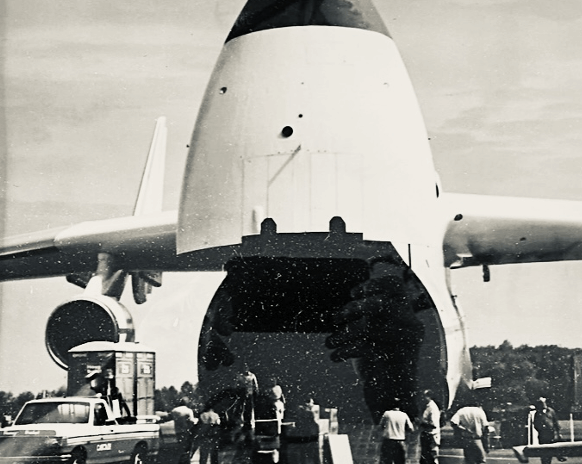HONEY BUCKET’S INTRODUCTION OF PORTABLE RESTROOMS TO THE SOVIET UNION – 1990
Throughout history, the spread of new ideas and new technology has often been by chance. Such is the case with the introduction of portable sanitation to the Soviet Union near the end of its existence in 1990.
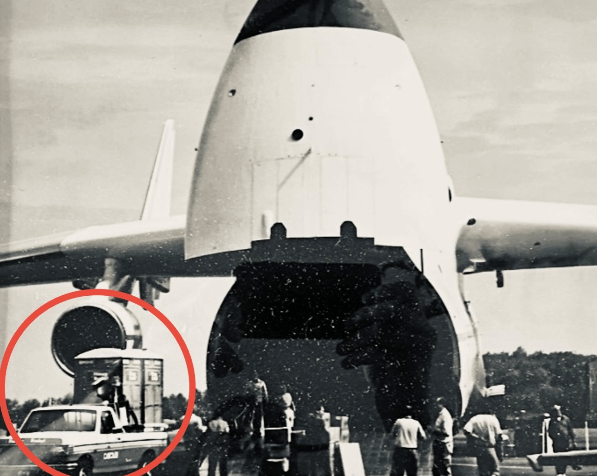
In August 1990, Honey Bucket introduced portable restroom units to the Soviet Union.
Though unplanned, this generous donation had a profound impact on the international
growth of our industry.

Background
In the mid-1980s, the political climate of the Soviet Union began to change, and General Secretary Mikhail Gorbachev implemented a policy known as “glasnost” or openness to increase transparency and public access to information. He also implemented “perestroika” or economic restructuring in an attempt to revitalize the struggling Soviet system.
Political change also began to overtake Europe as evidenced by the Fall of the Berlin Wall on November 9, 1989. Berlin - part democratic and part communist – since the end of World War II, was literally divided on August 13, 1961, with the construction of the Berlin Wall. After this momentous occasion, Germany became reunited on October 3, 1990, with the dissolution of East Germany and West Germany.
In Poland, free elections began in June 1989. On December 9, 1990, Lech Walesa became the first democratically elected President in Poland since 1926.
Other “Soviet Bloc Countries” dissolved, including Yugoslavia in 1991 (became 5 new countries) and Czechoslovakia in 1992 (became 2 new countries). The Baltic States – Estonia, Latvia, and Lithuania – became independent from the Soviet Union in 1991.
Amidst all of this change in 1990, the Soviet Union was beginning to weaken as an isolated, authoritarian state and culturally began to reach out more to the entire world.
In 1989 and 1990, the Soviet Union chose to participate for the first time ever in several air shows in Canada and in the United States, and this is where our story begins …
Antonov An-225 “Mriya” Airplane
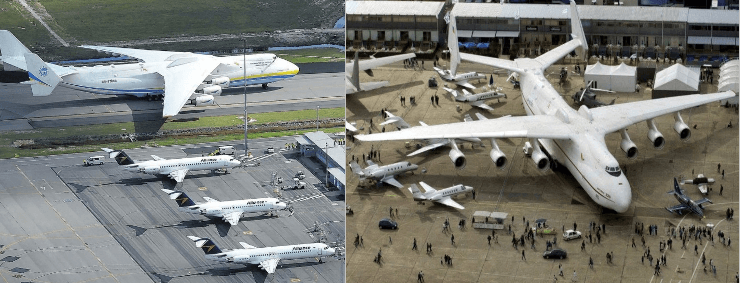
The largest cargo plane in the world, in comparison to other jets, and on display at an air show.
The Soviets were extremely proud of their An-225 aircraft - the largest in the world – constructed in 1988. This massive aircraft’s first international appearance was in August 1989 at the Abbotsford International Airshow in British Columbia. Abbotsford is located 45 miles southeast of Vancouver and 25 miles north of the US-Canadian border. According to reports, this aircraft “instantly became a global sensation.”
In 1990, one of the two “Mriya” aircraft participated in 2 air shows in the United States – the Aerospace America in Oklahoma City from June 16-18 and the Washington International Air Fair in Seattle from August 18-19.
On June 11, 1990, this massive aircraft landed at Paine Field in Washington en route to Oklahoma City. Local newspapers shared the following facts about this aircraft:
-
A wingspan of 290 feet (97 yards)
-
Total length of 275 feet (92 yards)
-
18 landing wheels
-
Cargo space can hold 80 average-sized cars.
-
Cargo space to hold 1 Soviet MIG fighter plane.
Goodwill Games, Seattle, July 20 - August 5, 1990
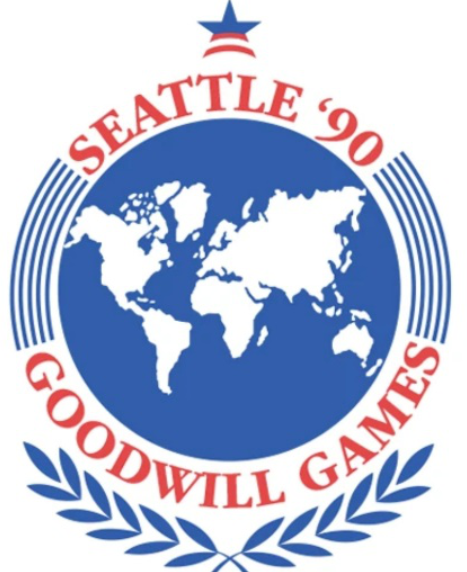
That same summer, Seattle was host to the 1990 Goodwill Games. Some 2,300 athletes from 54 countries participated in this major international sporting event. Honey Bucket provided portable restrooms at the various event venues. Based in the Seattle area, this highly respected company was and continues to be an industry leader and an active member of the PSAI. According to the UPI “Goodwill Games Notebook” from July 17, 1990:
“Portable bathrooms are not called ‘Port-o-Johns’ at the Athlete’s Village. They are called ‘Honey Buckets’ by everyone.”
Exposure to portable restrooms by the Soviet athletes, media, and fans is an important part of this story.
As part of the “goodwill” at these Games, the Soviets were also accepting donations of supplies and medical equipment for the victims of the Chernobyl nuclear accident that had occurred on April 26, 1986.
Washington International Air Fair, Seattle, August 18-20, 1990
This annual event was held the week following the Goodwill Games, and yet again, more Honey Bucket units were onsite for this event. With the Antonov AN-225 headlining the event, more Soviet onlookers and support personnel were in attendance. After the Air Fair, more equipment was loaded on the plane for the Chernobyl victims – some 90 tons of relief materials - but additional “souvenir” items were also being traded back and forth as reported in this headline from Daily Herald in Everett, Washington, on August 21, 1990:

Honey Bucket Units to the Soviets
Amidst this interchange and sharing of US-Soviet cultures, portable restrooms gained attention. Ron Inman, current Vice President of Northwest Cascade – Honey Bucket, was working both the Goodwill Games and the Air Fair at that time and shares that “they (Soviets) had never seen portable restrooms before. Portable toilets were a rarity in the Soviet Union.”
J.R. Inman, Ron’s brother, delivered the 2 Honey Bucket units in a pickup and can be seen in the photo at the top of this article. J.R. says that “I was able to drive inside the Antonov, unload the units, and completely turn around before exiting. It was an enormous plane.”
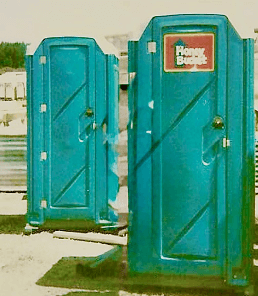
The Daily Journal of Commerce in Seattle - as reported in the “PSA in Action Newsletter Year End 1990 Edition” - gave a fitting tribute to Northwest Cascade - Honey Bucket:
“There was much people-to-people exchange between Americans and Soviets. Much was learned about the other’s culture: many gifts were exchanged. But it was Northwest Cascade, Inc.’s gift that will perhaps do the most to revolutionize the Soviet economy: Two Honey Buckets.”
Continuing …
“While sending Honey Buckets to the Soviet Union may open up new markets for the portable toilet business, Inman and Northwest Cascade are not looking for anything in return. It was a goodwill gesture in a time of new-found friendships among the two countries.”
After 1990 …
On December 26, 1991, the Soviet Union was officially dissolved as President Gorbachev resigned. Boris Yeltsin became President of Russia. Russia faced economic hardship during the rise of a market economy. As the economy stabilized, new businesses began to emerge.
1997 LEX Group
One of the first manufacturers of portable toilets, the Toypek portable units remain the most popular in Russia. Piteco composting toilets were also developed by LEX Group. According to their website, they now export Toypek and Piteco units to more than 20 countries around the world.
FINAL THOUGHTS
The generous gift of 2 Honey Buckets introduced portable restrooms to the Soviet Union. The presence of these units at the 1990 Goodwill Games and the Washington International Air Fare allowed Soviet athletes and spectators to experience portable restrooms – many for the first time. After the fall of the Soviet Union and the adoption of new cultural ideas and practices, portable sanitation became established in Russia as it was in the rest of the world. Thank you, Northwest Cascade – Honey Bucket!
